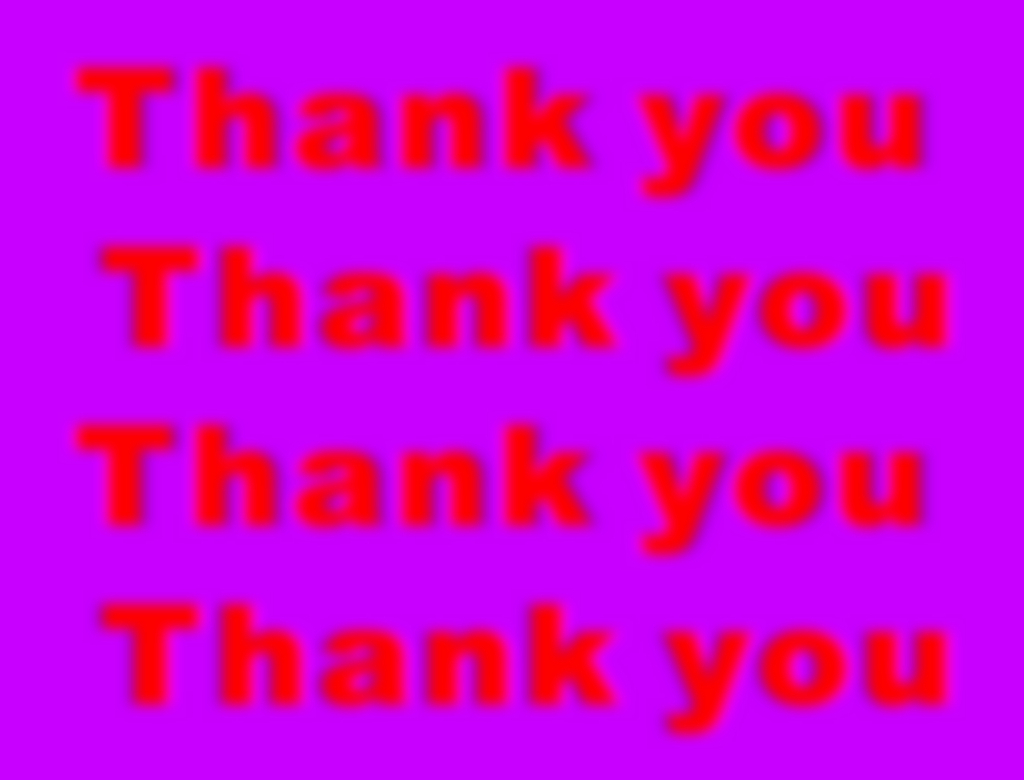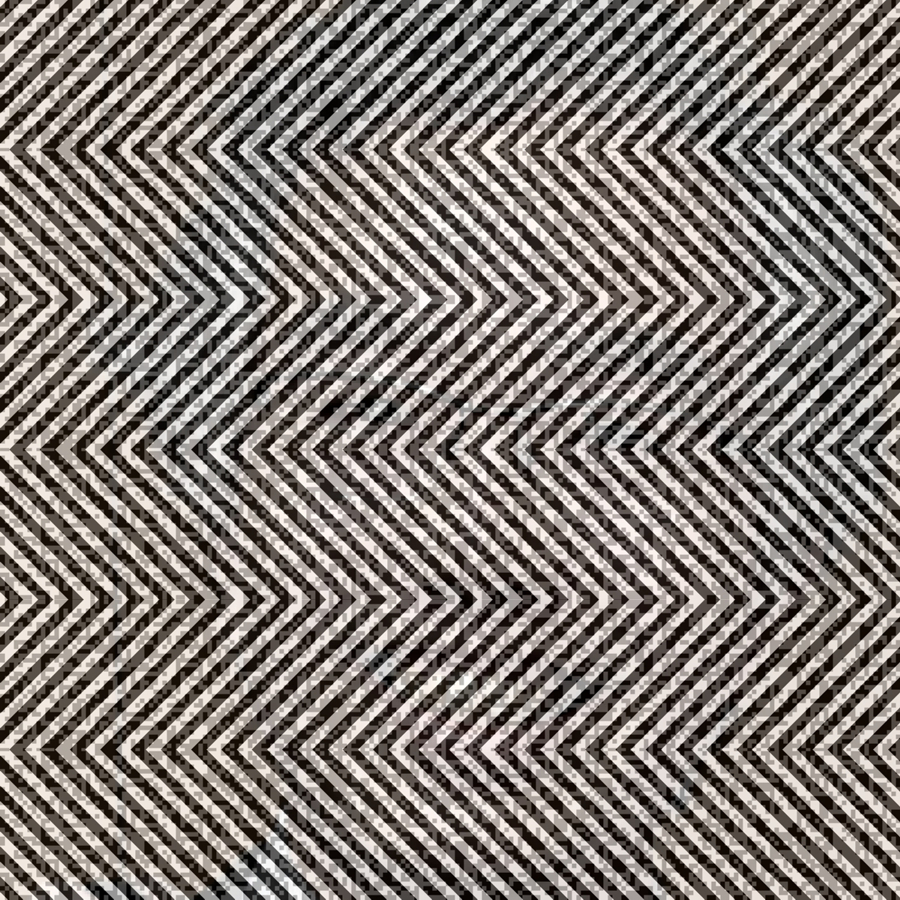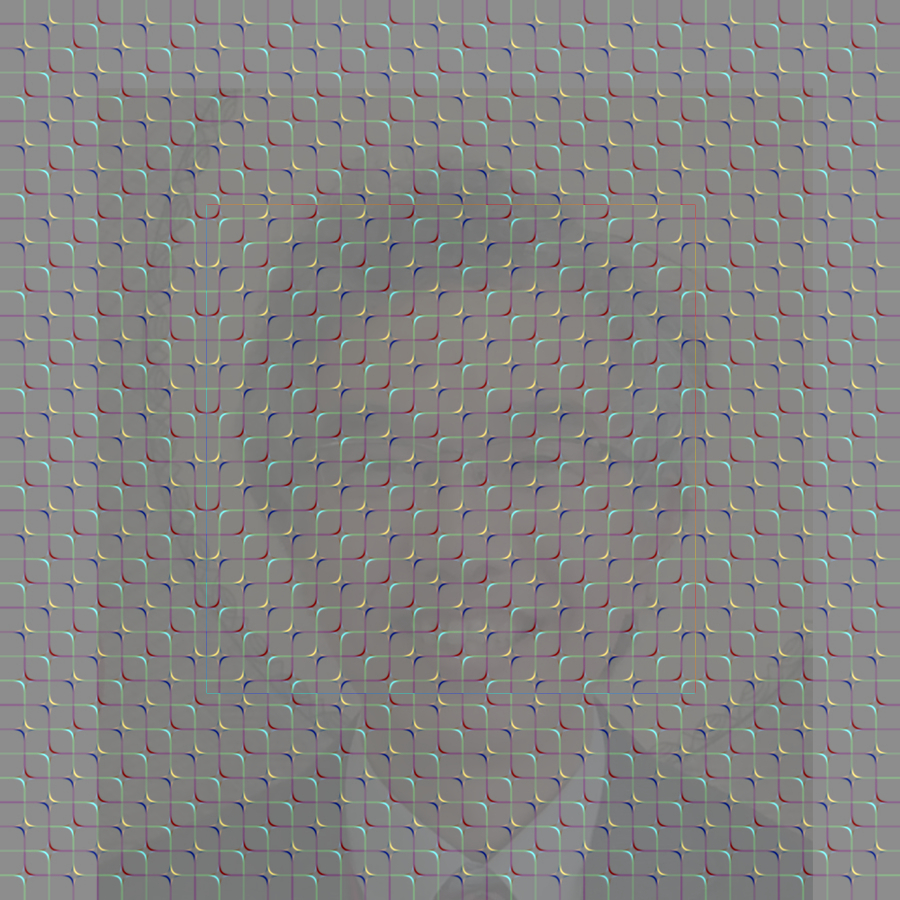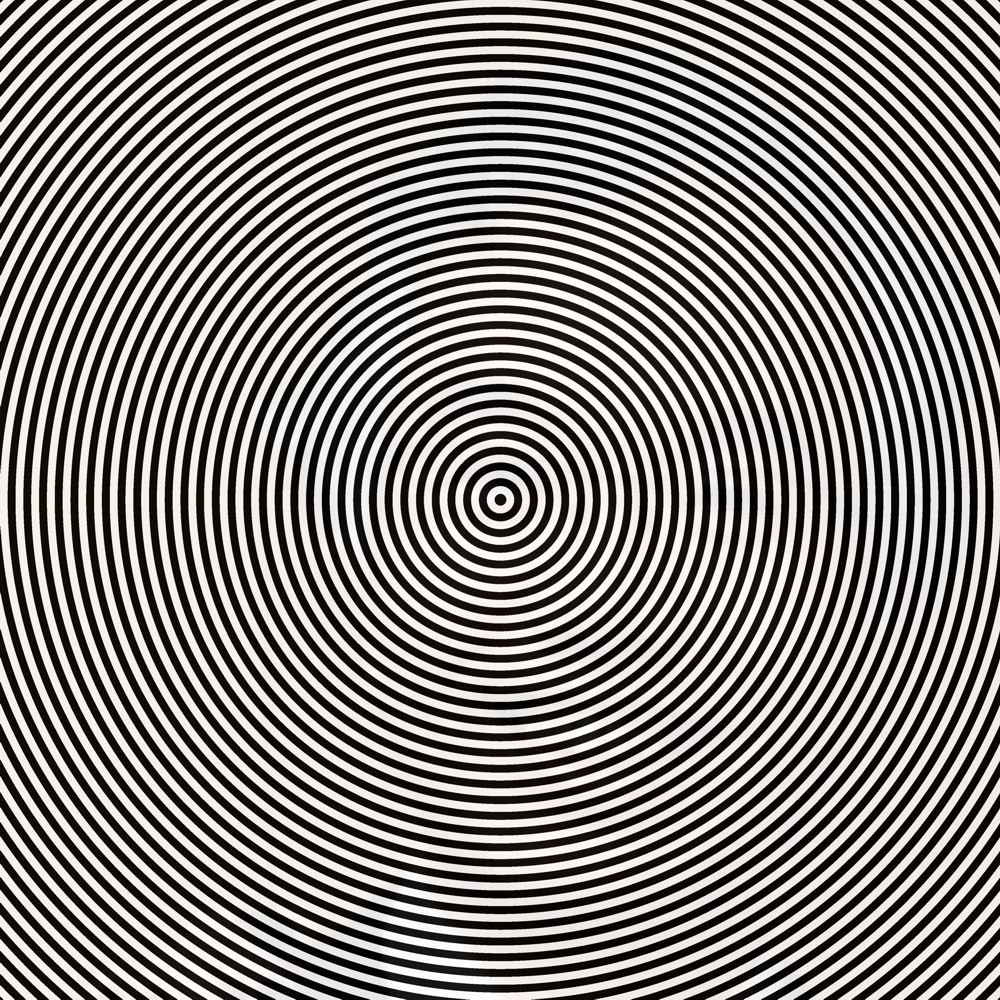第13回錯覚ワークショップ 明治大学中野キャンパス6階セミナー室3
2019年2月26日(火)16:30-17:00
Color illusion and histogram equalization
北岡 明佳(Akiyoshi KITAOKA) email
立命館大学総合心理学部(Ritsumeikan University, Psychology)
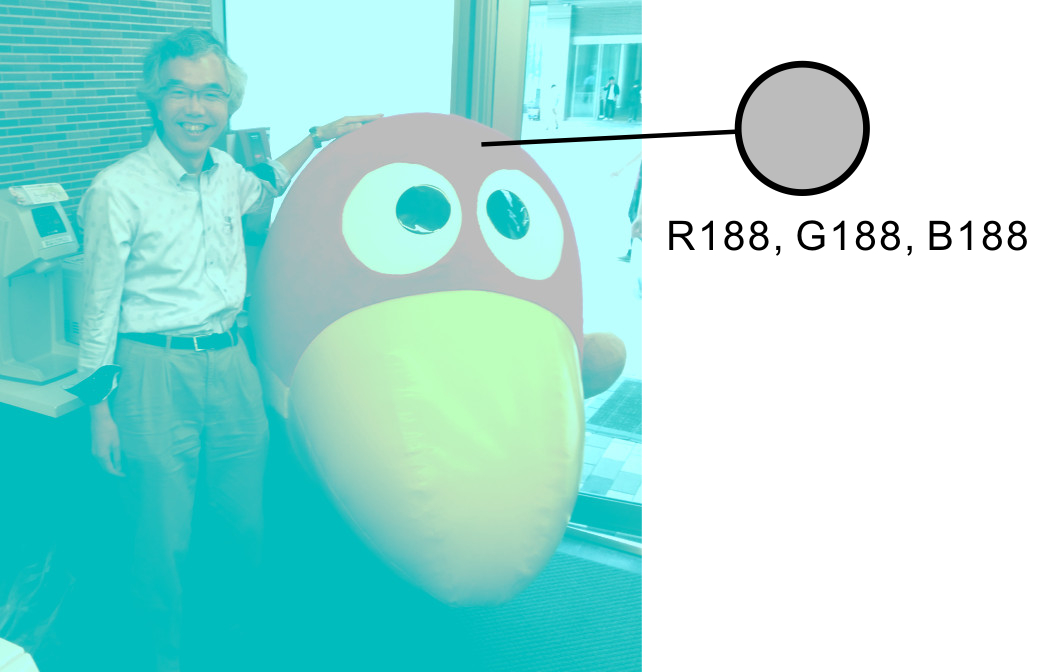
"Akiyoshi Kitaoka and Kyoro-chan (mascot of a chocolate snack)"
The head of the bird appears to be reddish, though the pixels are not.
Copyright Akiyoshi Kitaoka 2019 (February 24)
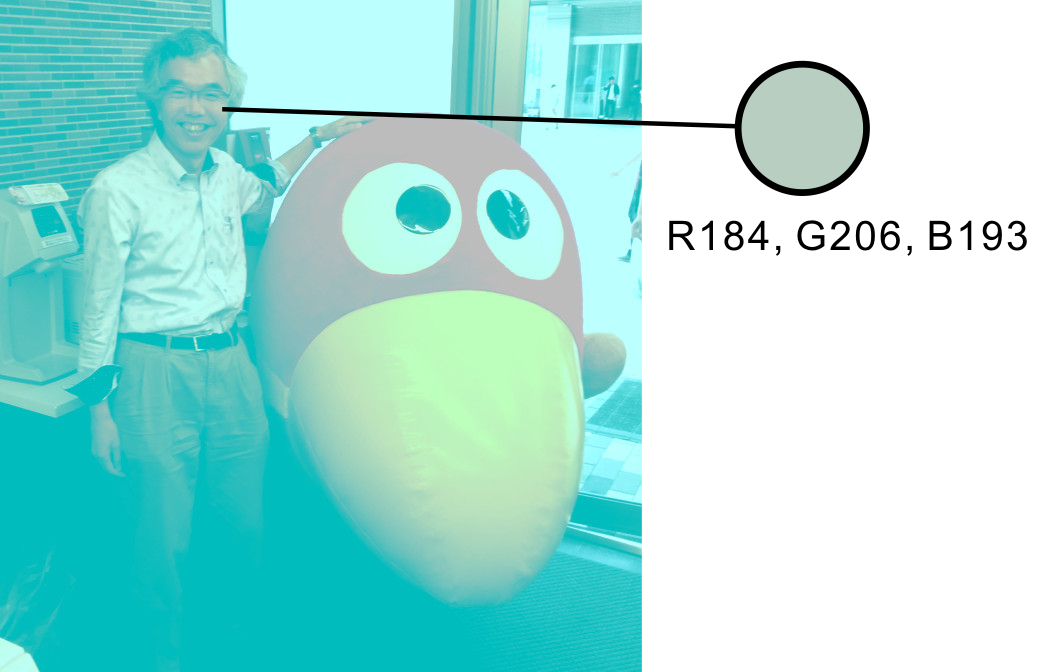
"Akiyoshi Kitaoka and Kyoro-chan 2"
My face appears to be reddish, though the pixels are greenish.
Copyright Akiyoshi Kitaoka 2019 (February 24)
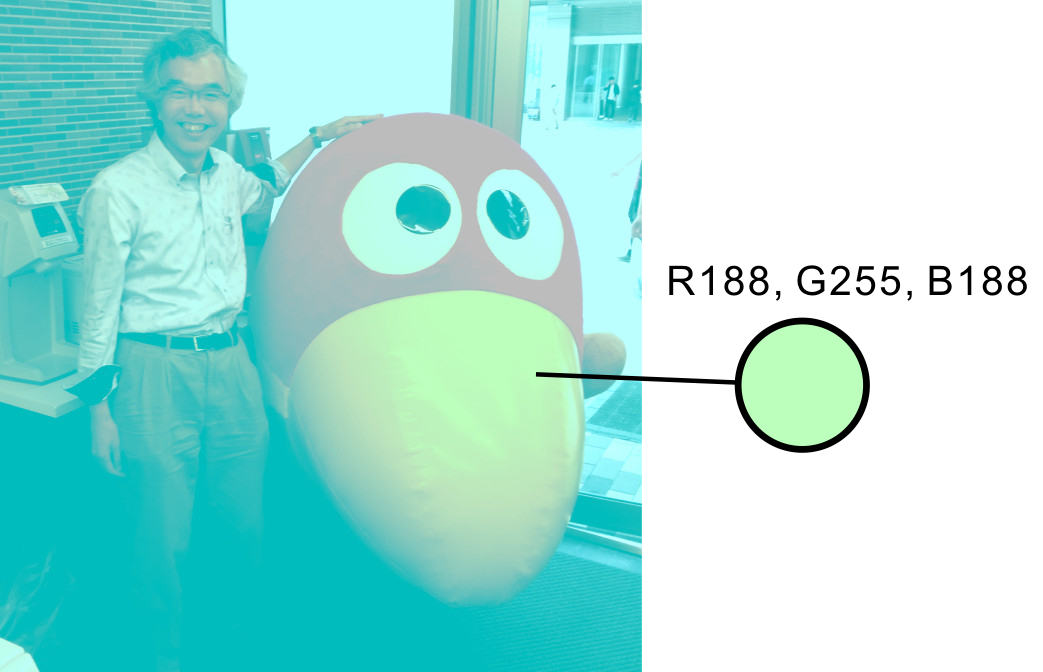
"Akiyoshi Kitaoka and Kyoro-chan 3"
The beak of the bird appears to be yellowish, though the pixels are greenish.
Copyright Akiyoshi Kitaoka 2019 (February 24)
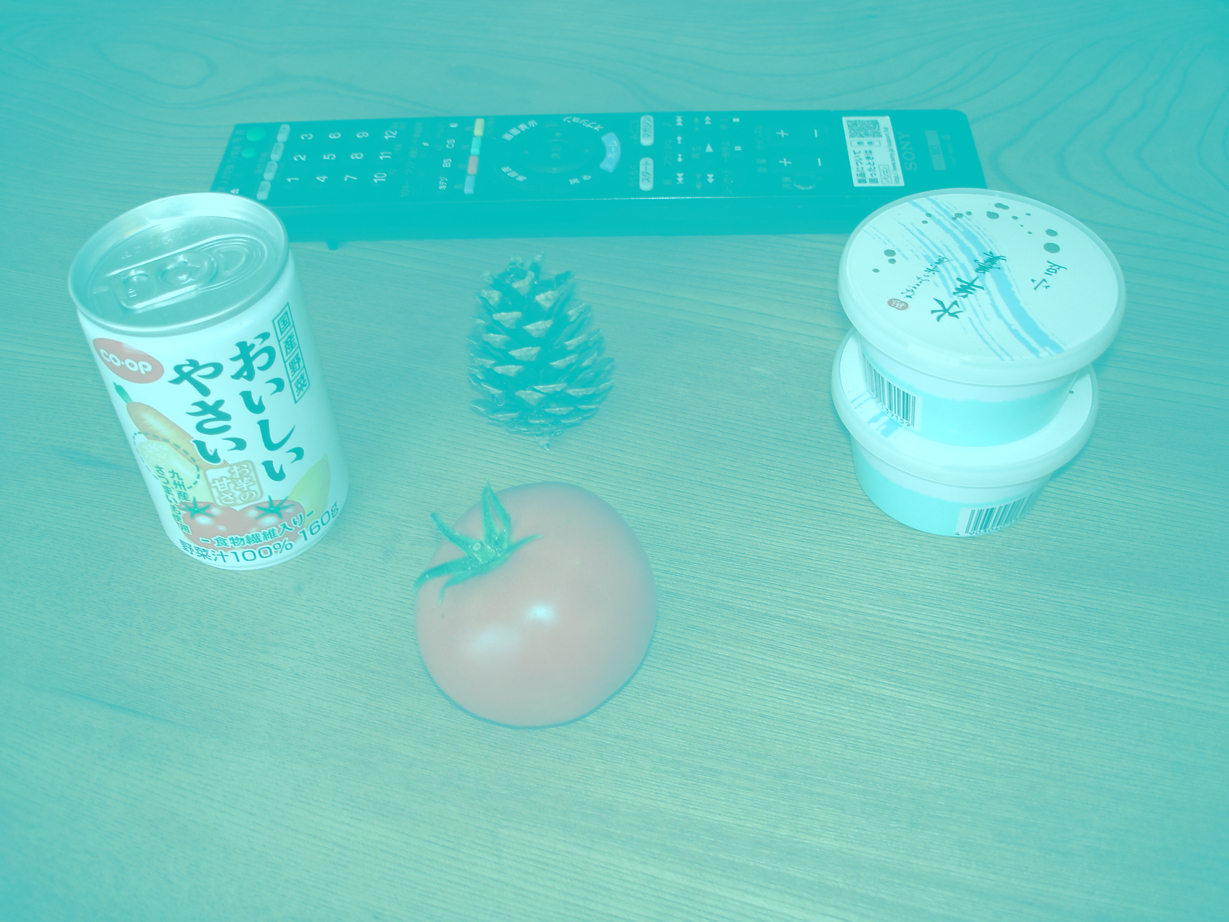

A tomato appears to be reddish, though the pixels are not.
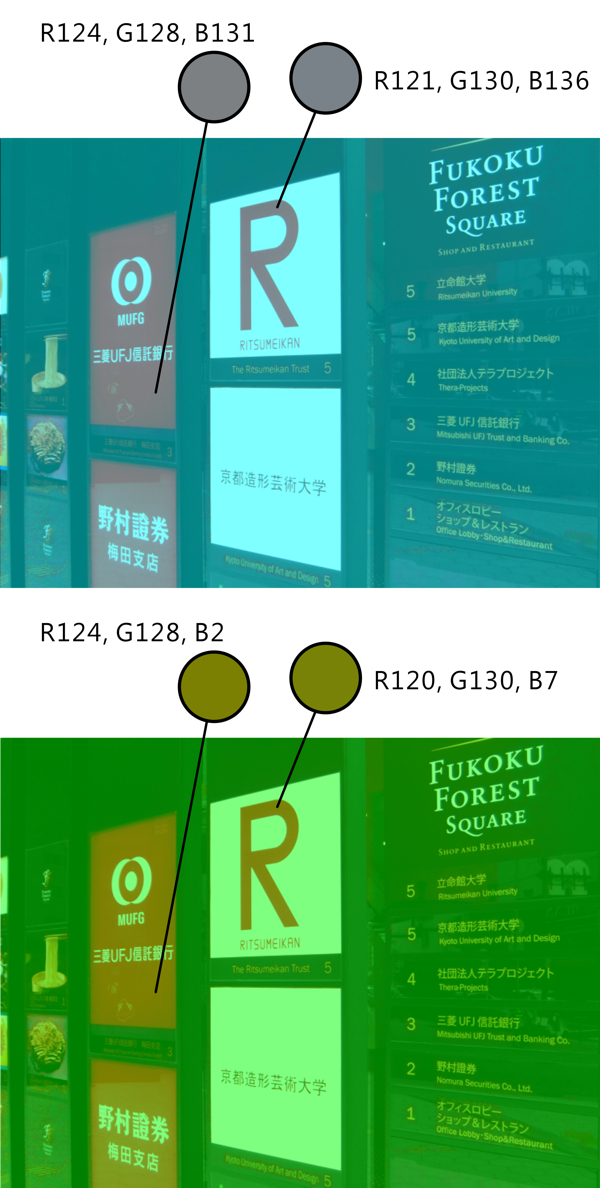
Signboards appear to be reddish, though the pixels are grayish in the upper image or yellowish in the lower one.
Copyright Akiyoshi Kitaoka 2019 (February 20)
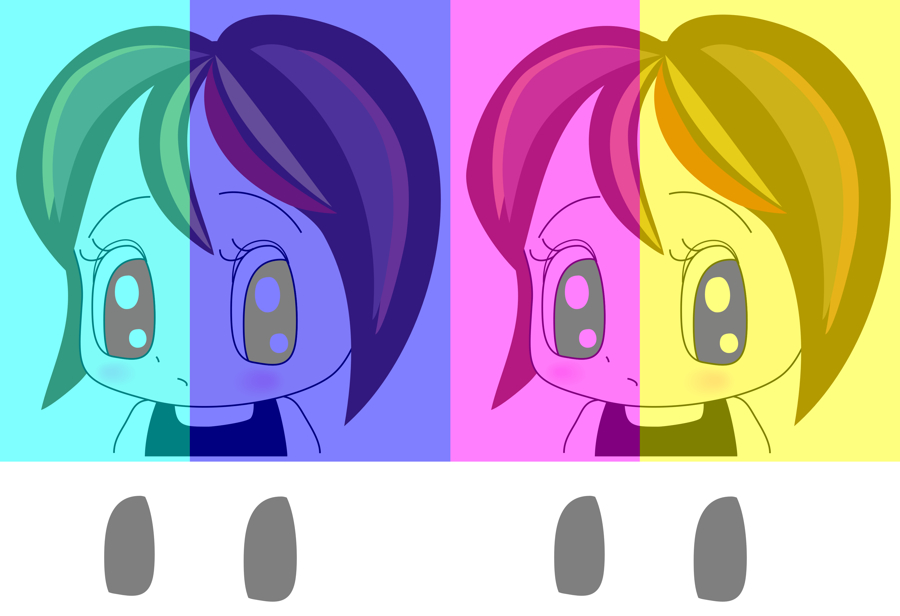
「RGBで白と黒」
Eyes appear to be reddish, yellowish, greenish and bluish, though they are gray as shown below.
左から、赤・黄・緑・青の目に見えるが、ほぼ同じ灰色である。
Copyright Akiyoshi Kitaoka 2017 (June 23) (updated on February 20, 2019)
加算的色変換による色の恒常性
Additive color change and color constancy
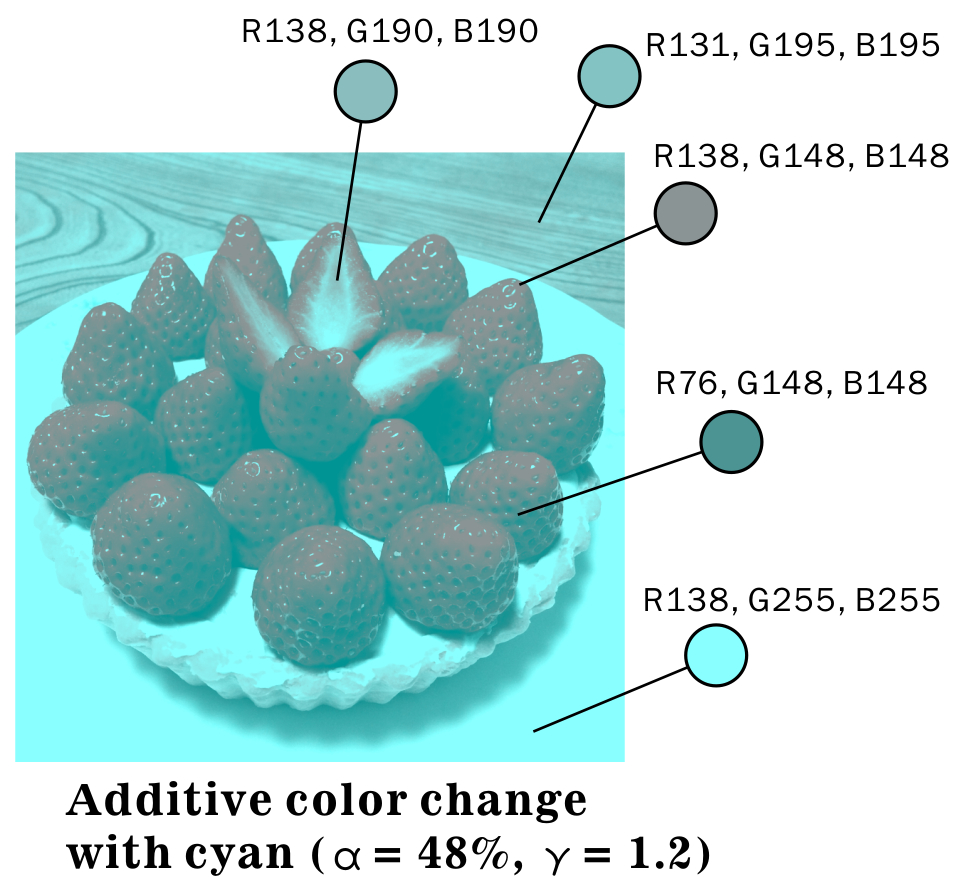
(γ = 1.2, α = .48)
Strawberries appear to be reddish, though each pixel is cyan hue.
Copyright Akiyoshi Kitaoka 2019 (February 20)
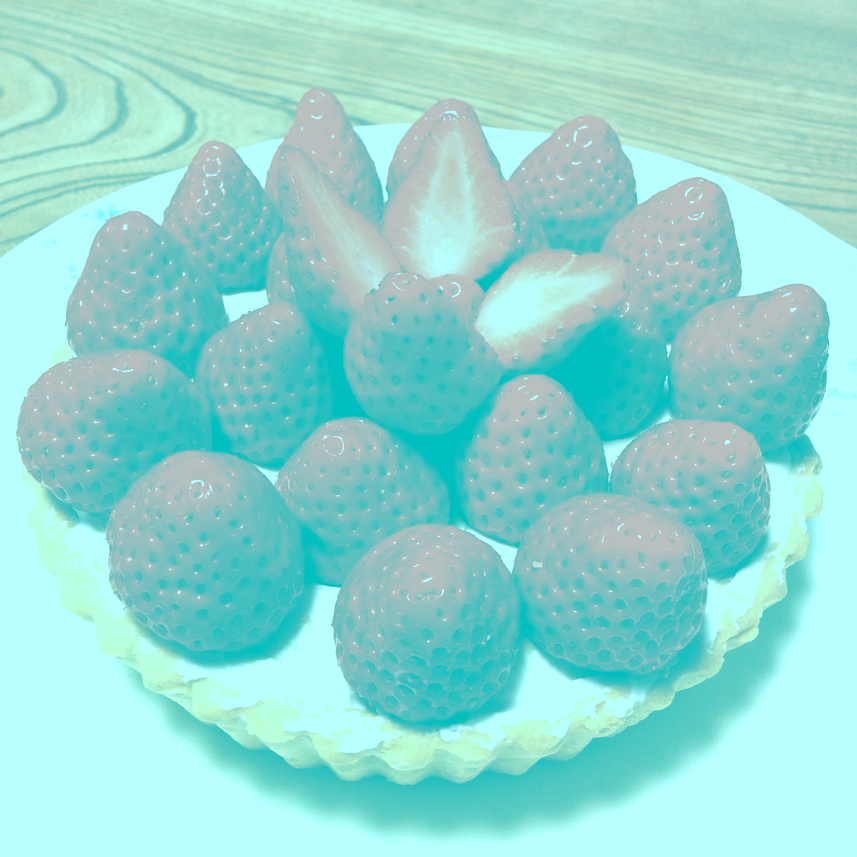
(sRGB, α = .48)
「赤く見えるいちご」
Strawberries appear to be reddish, though each pixel is cyan hue (luminance-based transformation).
すべてのピクセルはシアン色近辺の色相であるが、イチゴは赤く見える。加法色はシアンで、透明度(アルファ値)は48%の加法的色変換。
Copyright Akiyoshi Kitaoka 2017 (September 2)
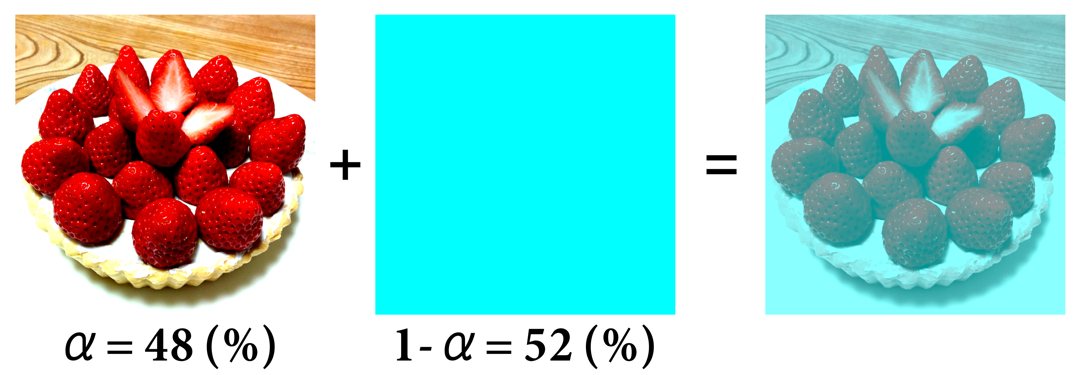
How to make a transformed image with alpha blending
Copyright Akiyoshi Kitaoka 2019 (February 20)
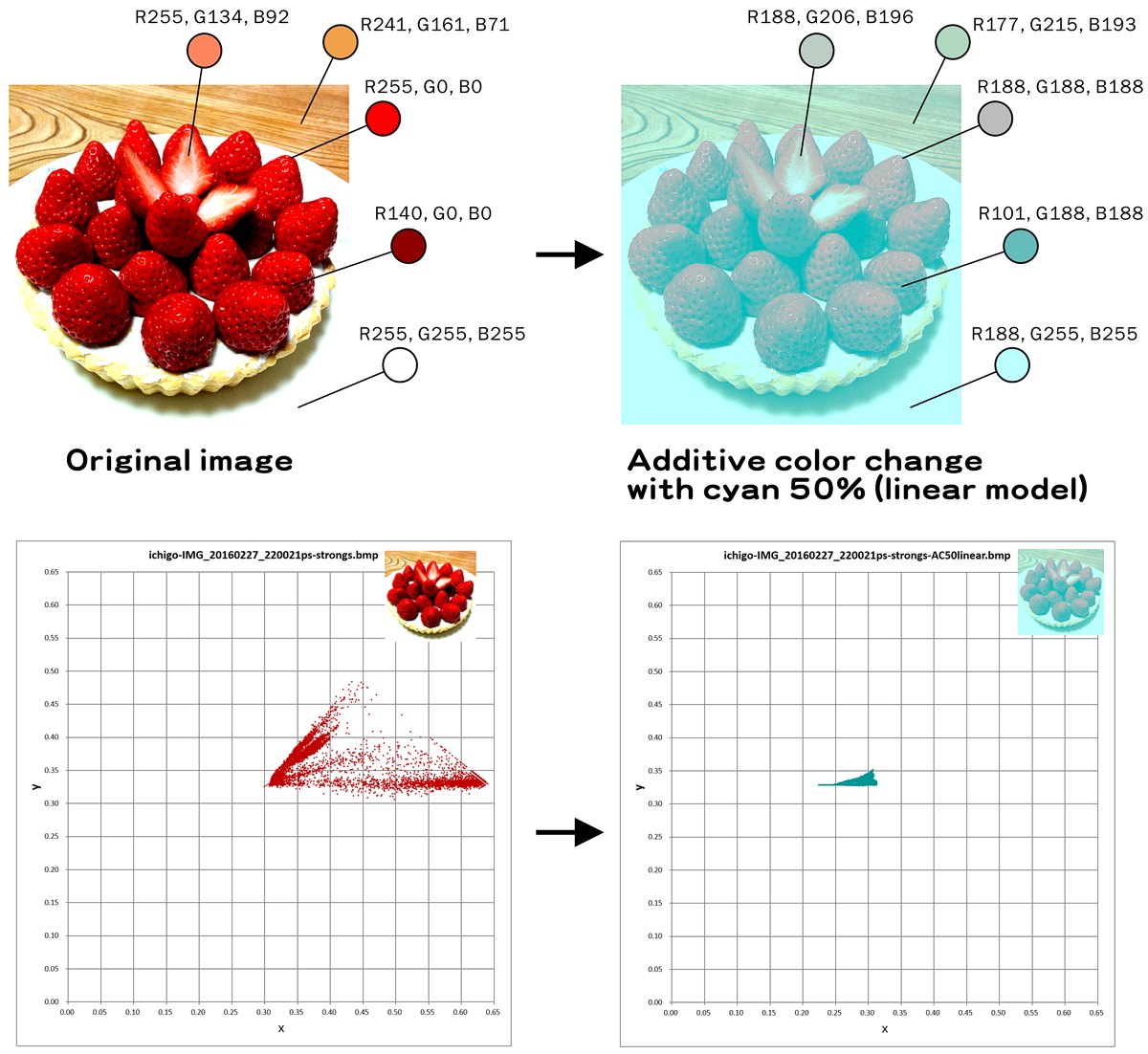
(with a CIE diagram)
Copyright Akiyoshi Kitaoka 2017 (March 15)
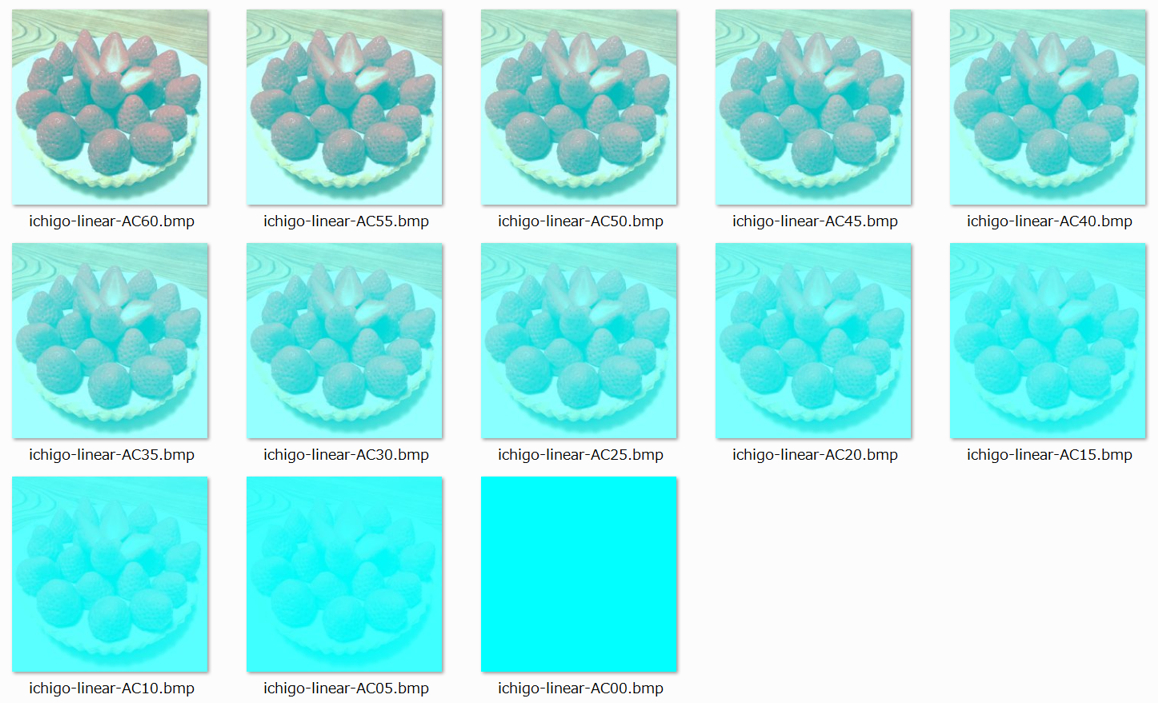
(Transformed images with a variety of alpha values)
Copyright Akiyoshi Kitaoka 2017 (September 2)
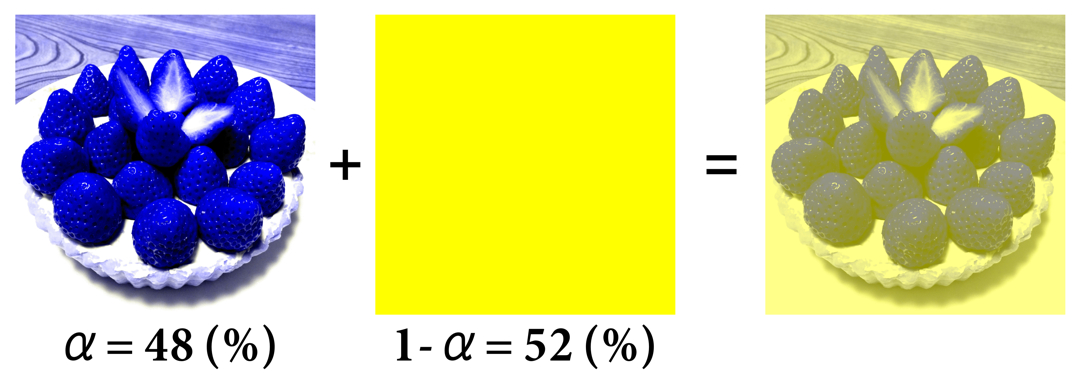
Strawberries appear to be bluish, though each pixel is yellow hue.
Copyright Akiyoshi Kitaoka 2019 (February 20)
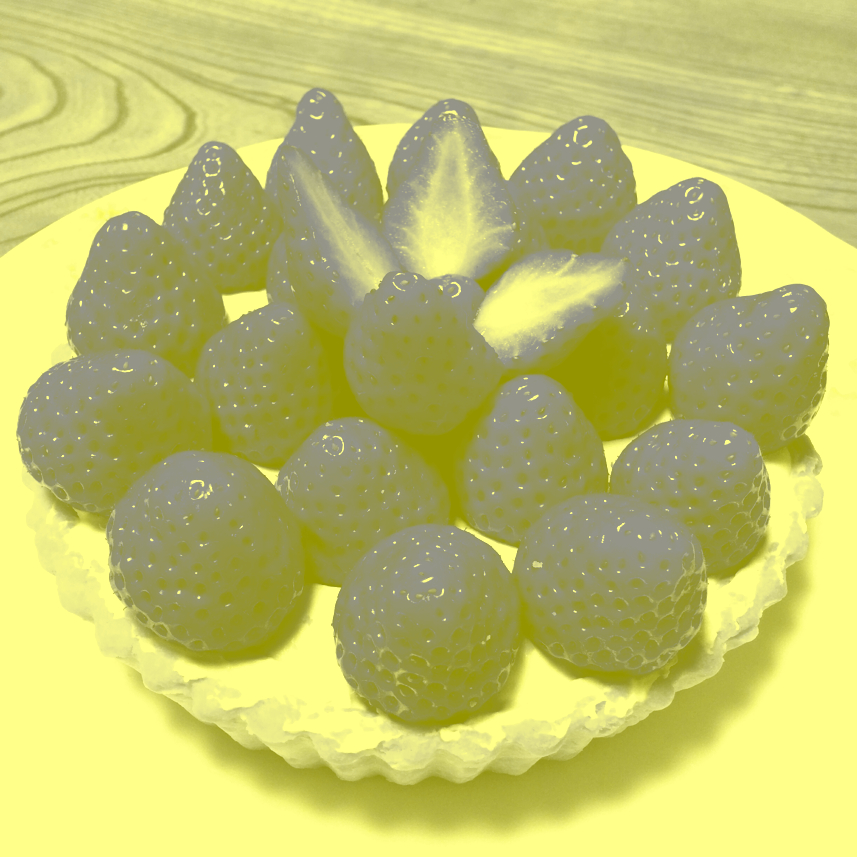
(γ = 1.2, α = .48)
Strawberries appear to be bluish, though each pixel is yellow hue.
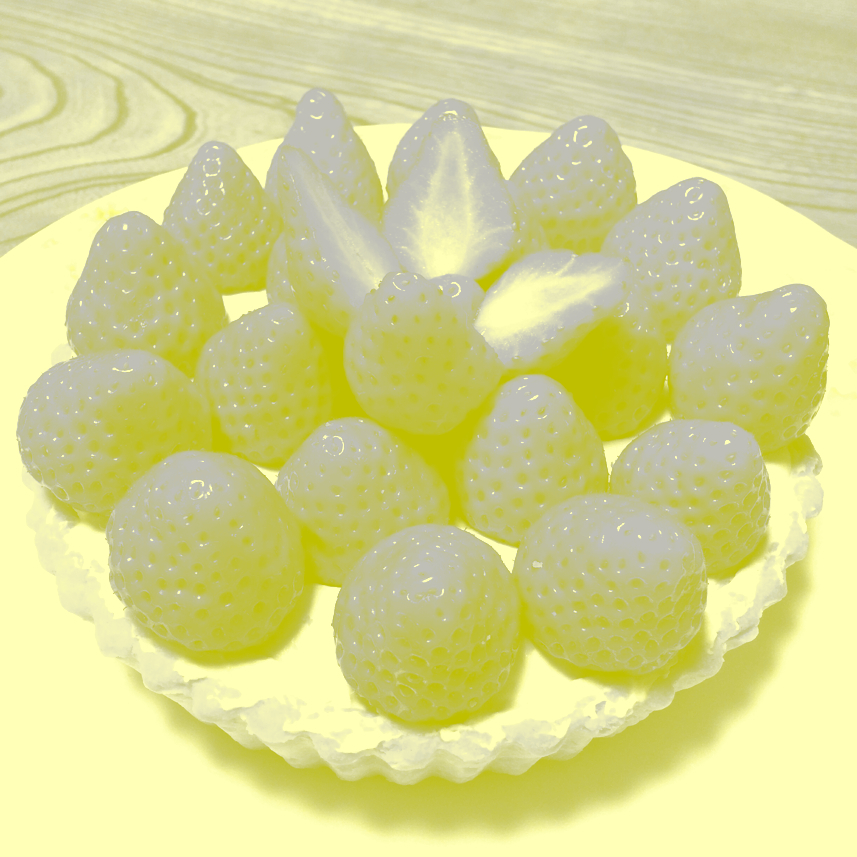
(sRGB, α = .48)
「青く見えるいちご」
Strawberries appear to be bluish, though each pixel is yellow hue (luminance-based transformation).
すべてのピクセルは黄色の色相であるが、イチゴは青く見える。加法色は黄色で透明度は48%の加法的色変換。
Copyright Akiyoshi Kitaoka 2017 (September 2)
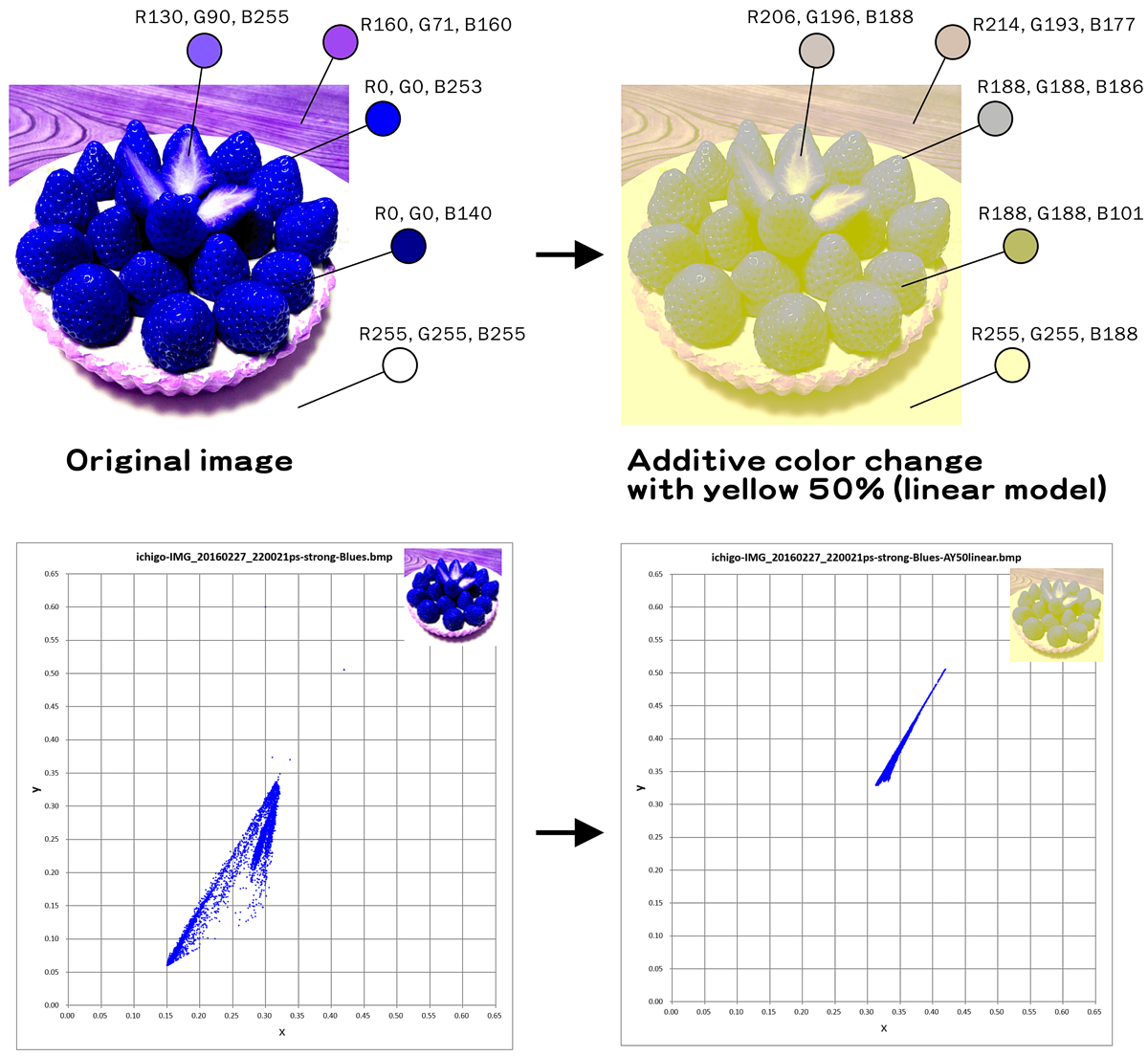
(with a CIE diagram)
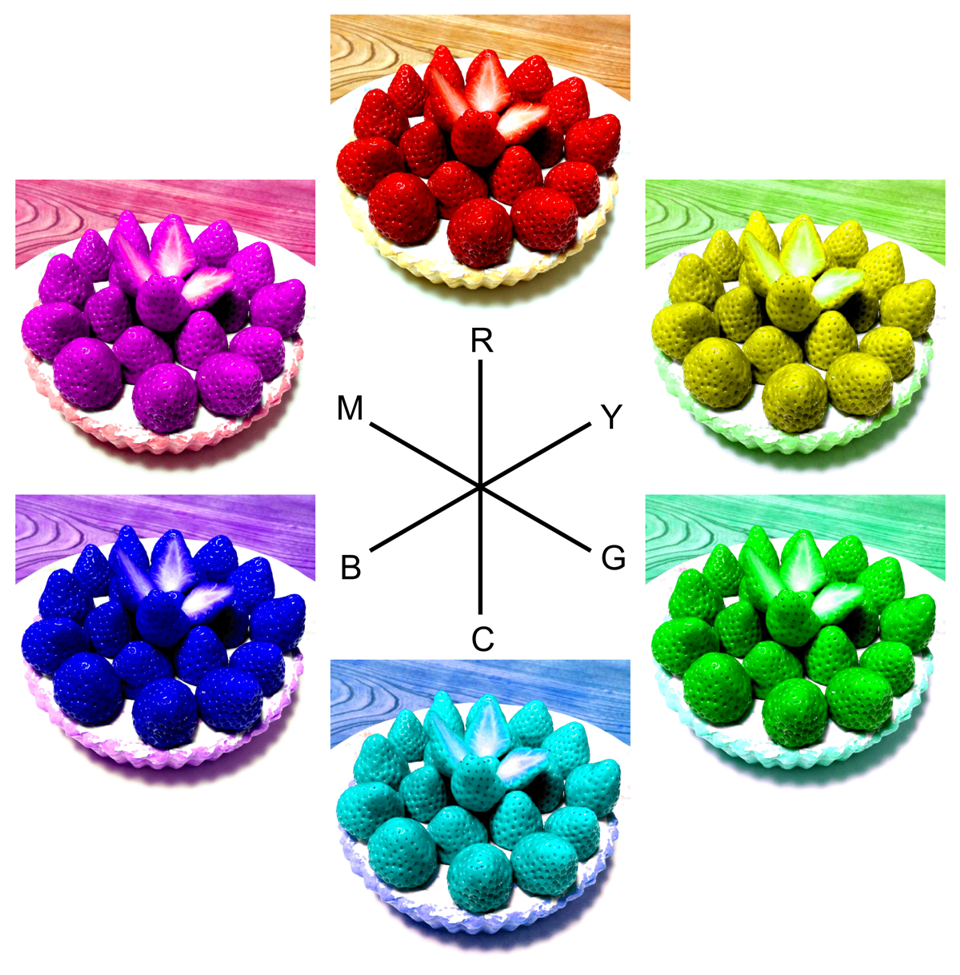
Copyright Akiyoshi Kitaoka 2017 (September 2)
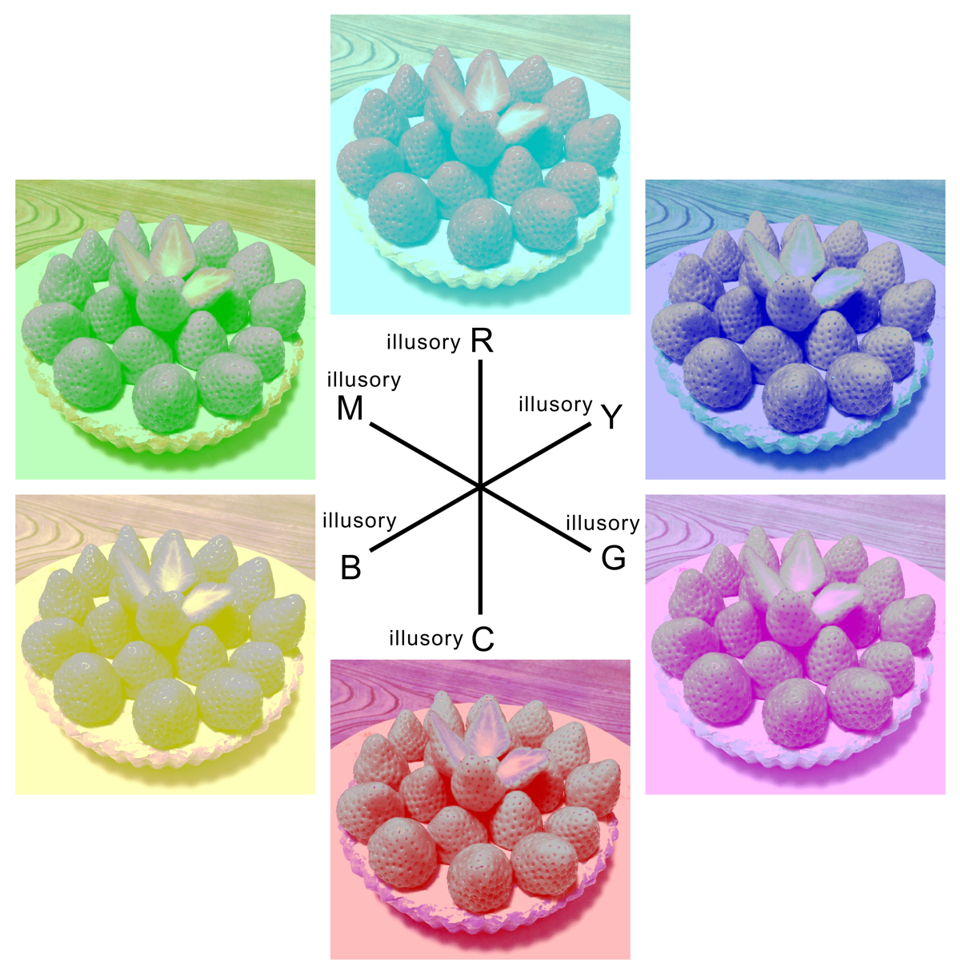
Any color works.
Copyright Akiyoshi Kitaoka 2017 (September 2)
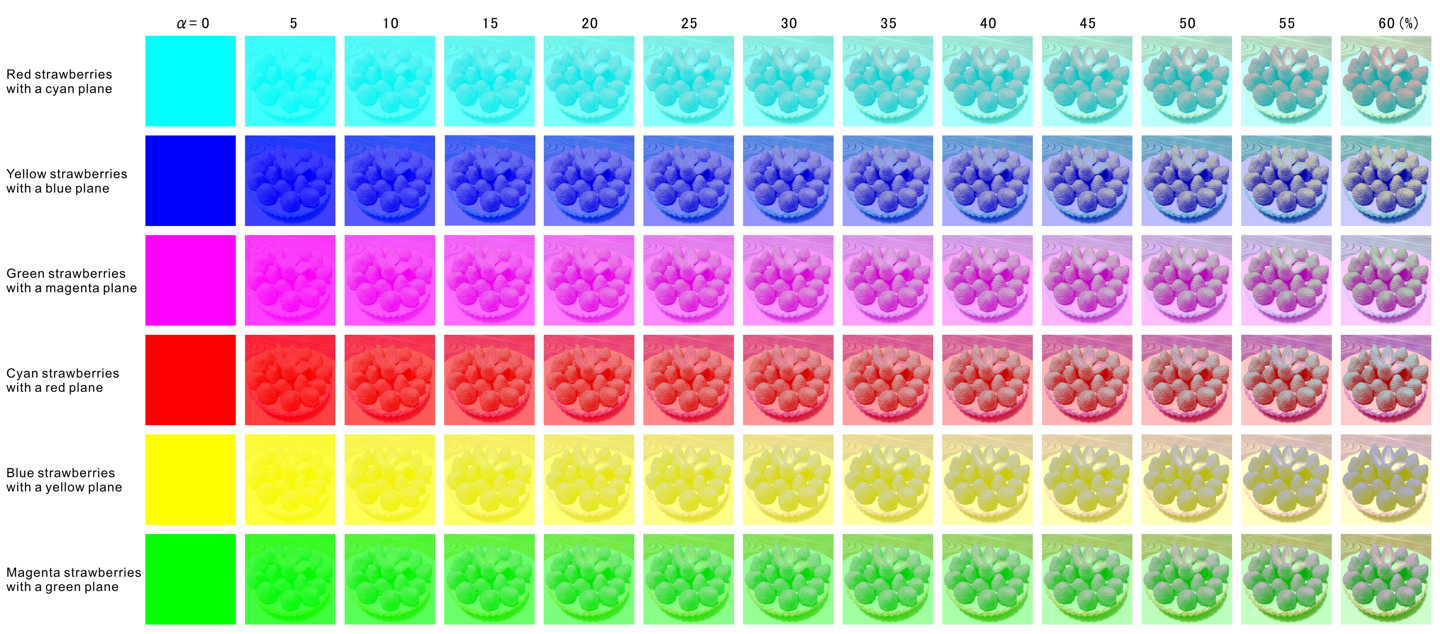
(Transformed images with a variety of alpha values for the six color images)
3種類の色の恒常性画像
Three different color changes to show color constancy
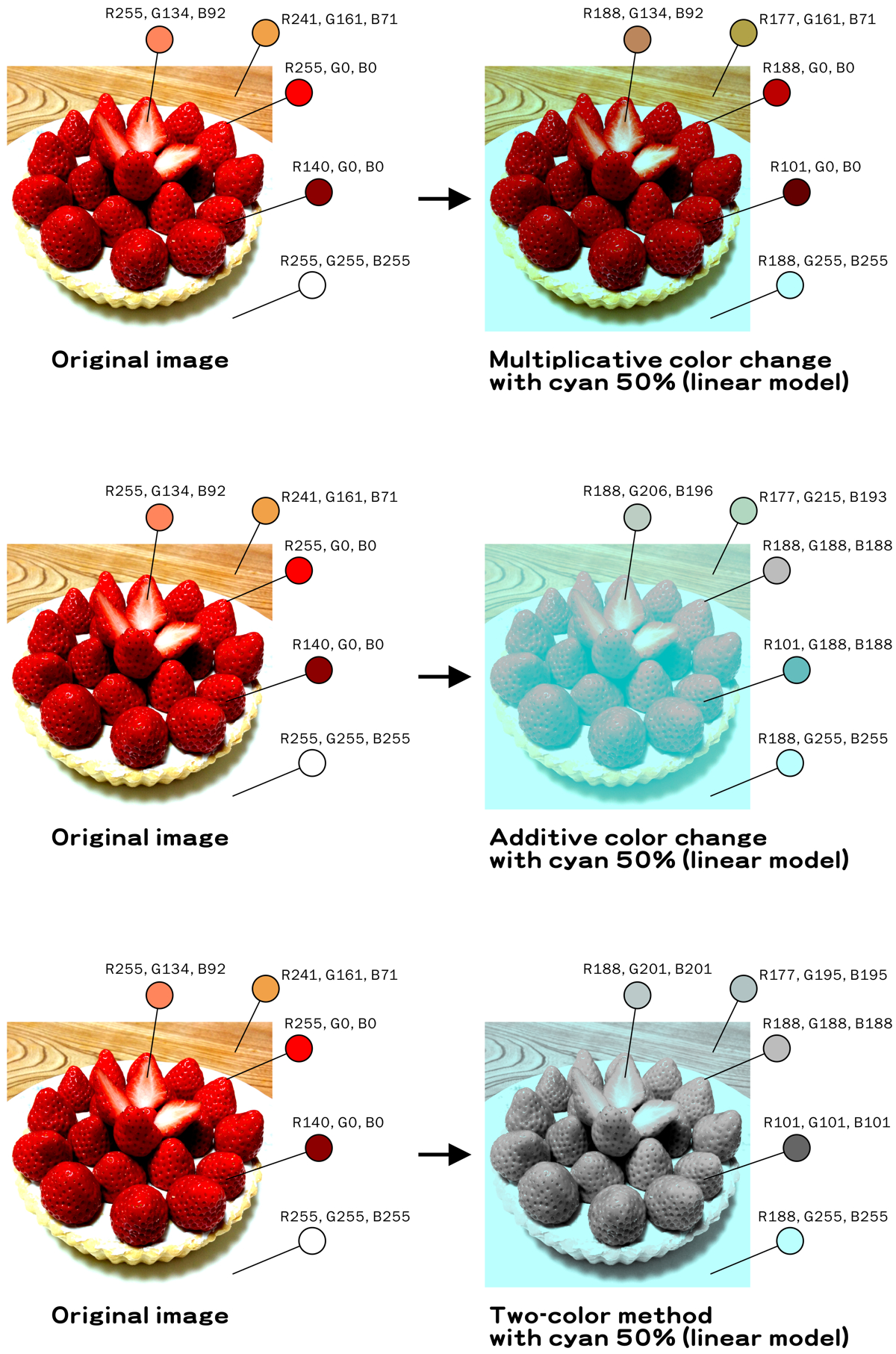
The hypothesis of "histogram equalization" proposed by Shapiro et al. (2018) can explain these phenomena.
Shapiro, A., Hedjar, L., Dixon, E., and Kitaoka, A. (2018). Kitaoka's tomato: Two simple explanations based on information in the stimulus. i-Perception, 9(1), January-February, 1-9. PDF (open access)
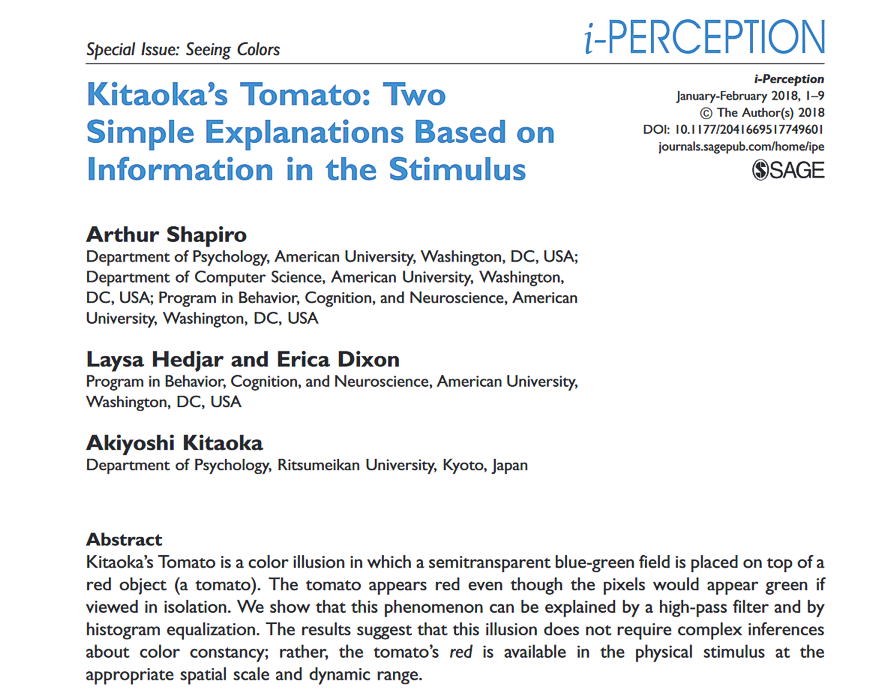
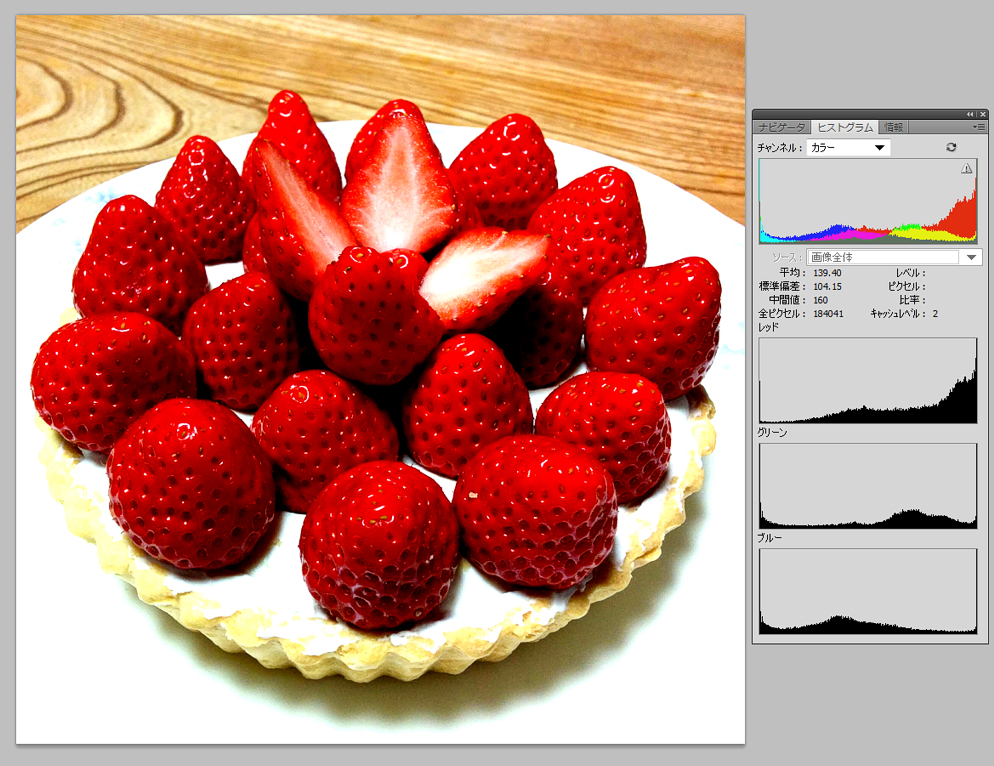
additive color change↓ ↑histogram equalization
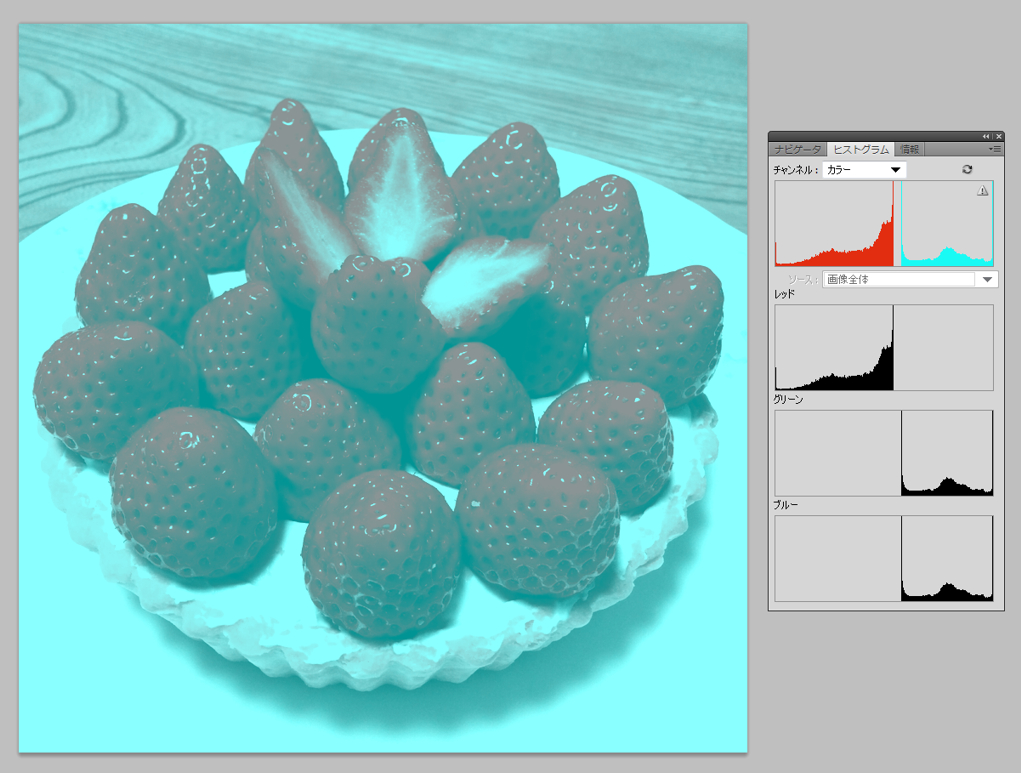
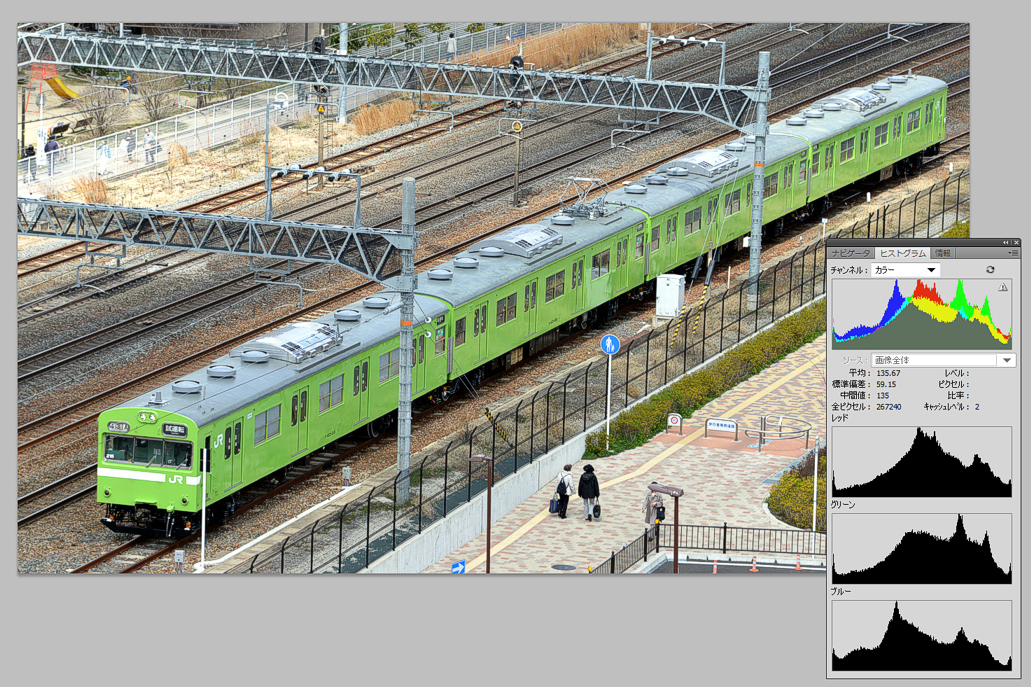
additive color change↓ ↑histogram equalization
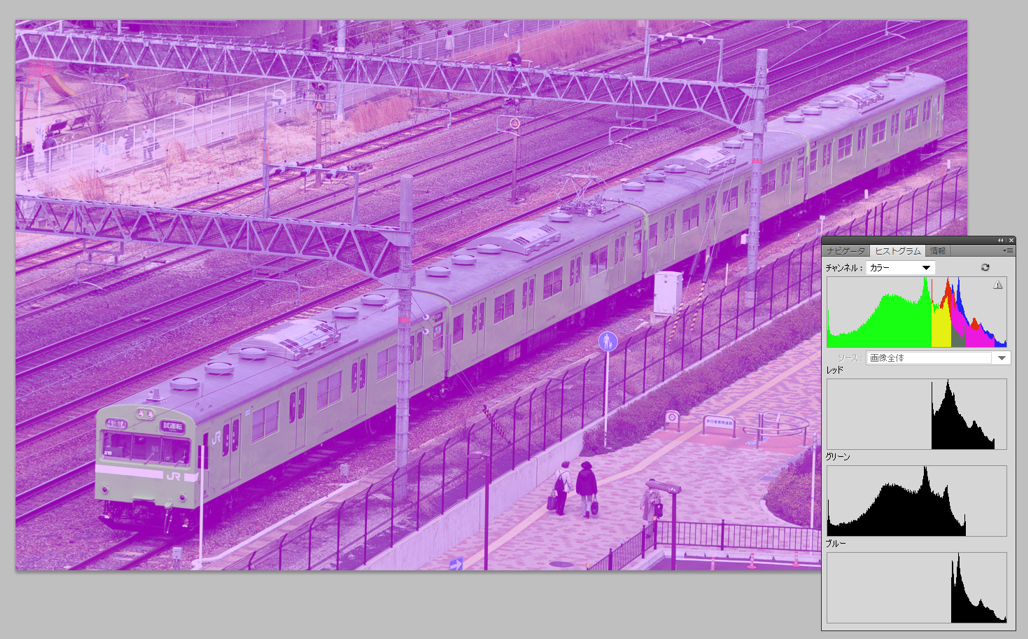

multiplicative color change↓ ↑histogram equalization
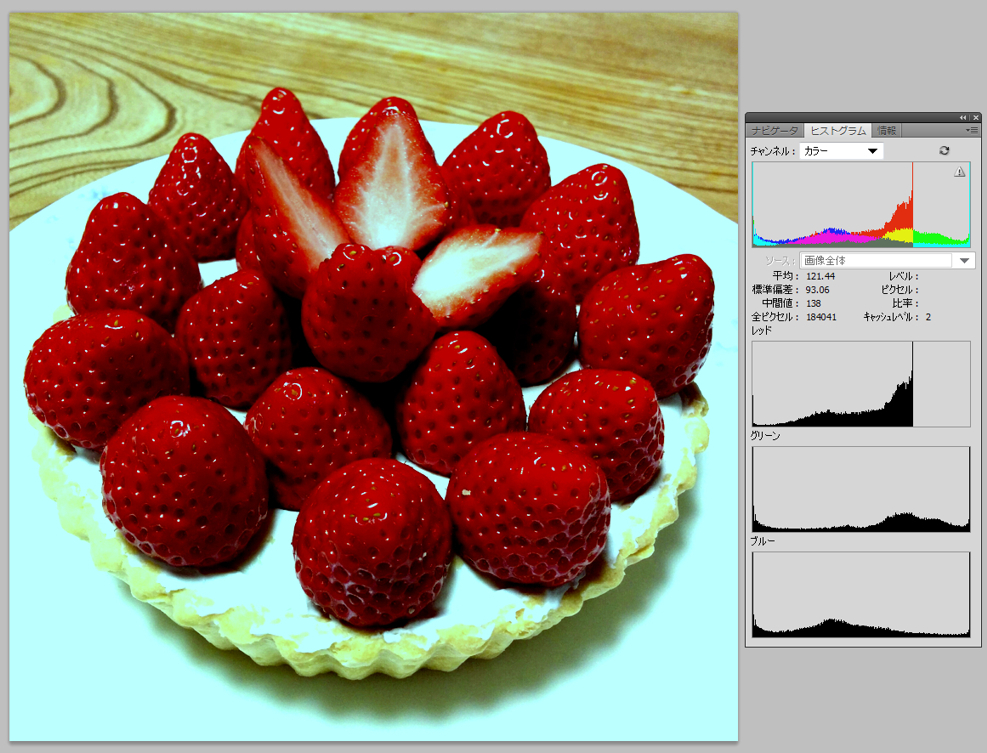

color change with the two-color method↓
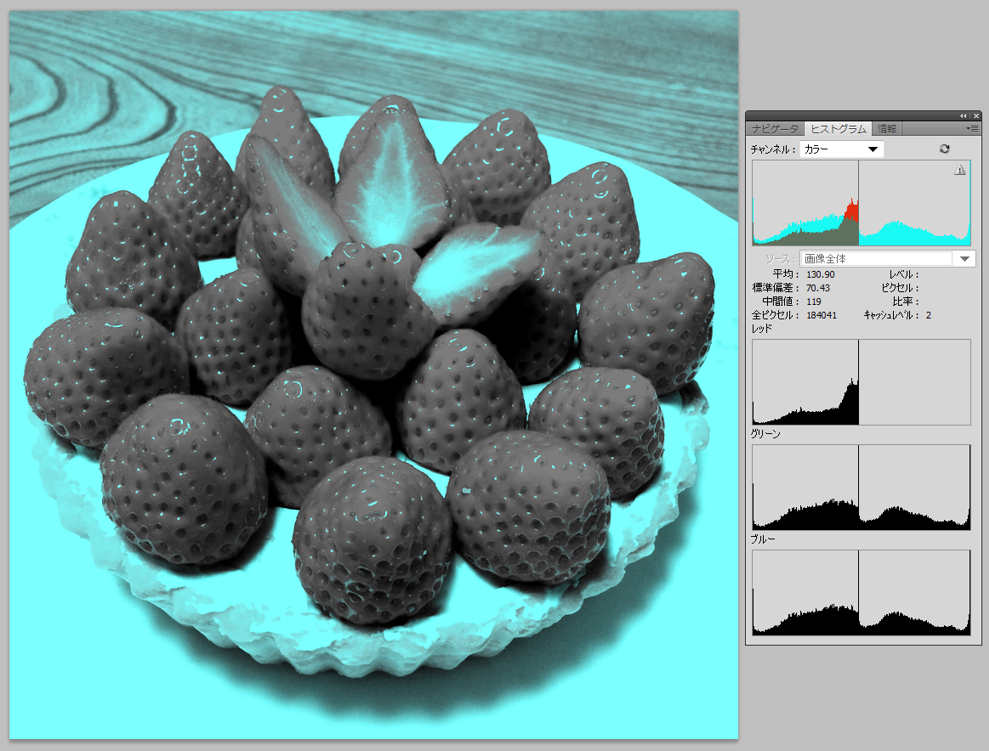
histogram equalization↓ ↑multiplicative color change
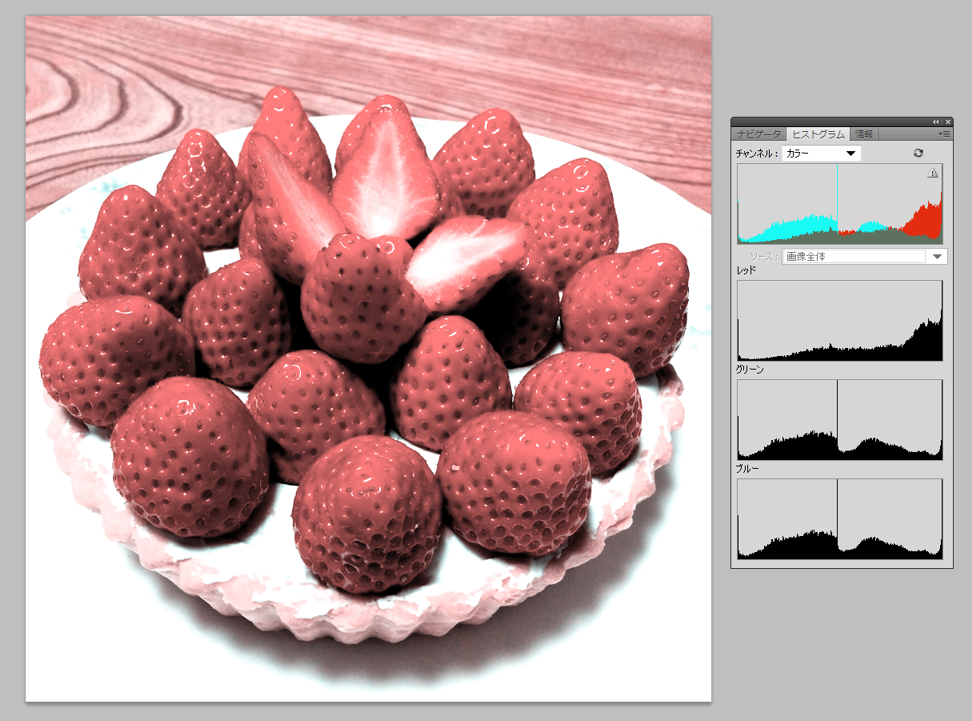
How to make an image with the two-color method
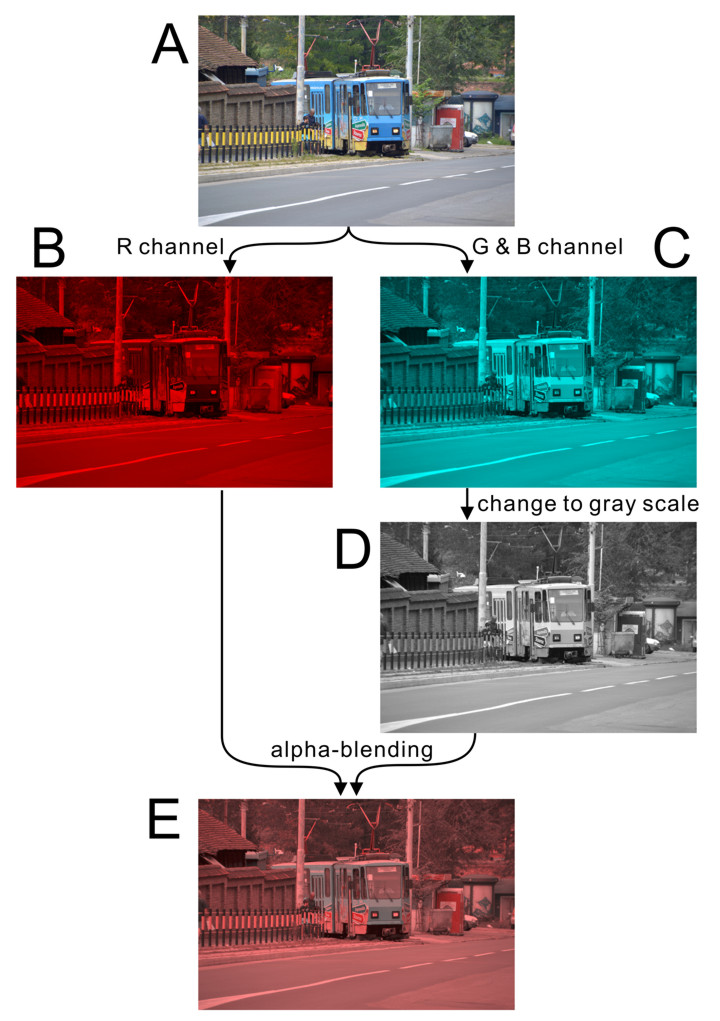
In image E, the tram appears to be bluish, though all the pixels are reddish.
静脈が青く見える錯視
Vein color illusion
Veins appear to be bluish, though the pixels are not.
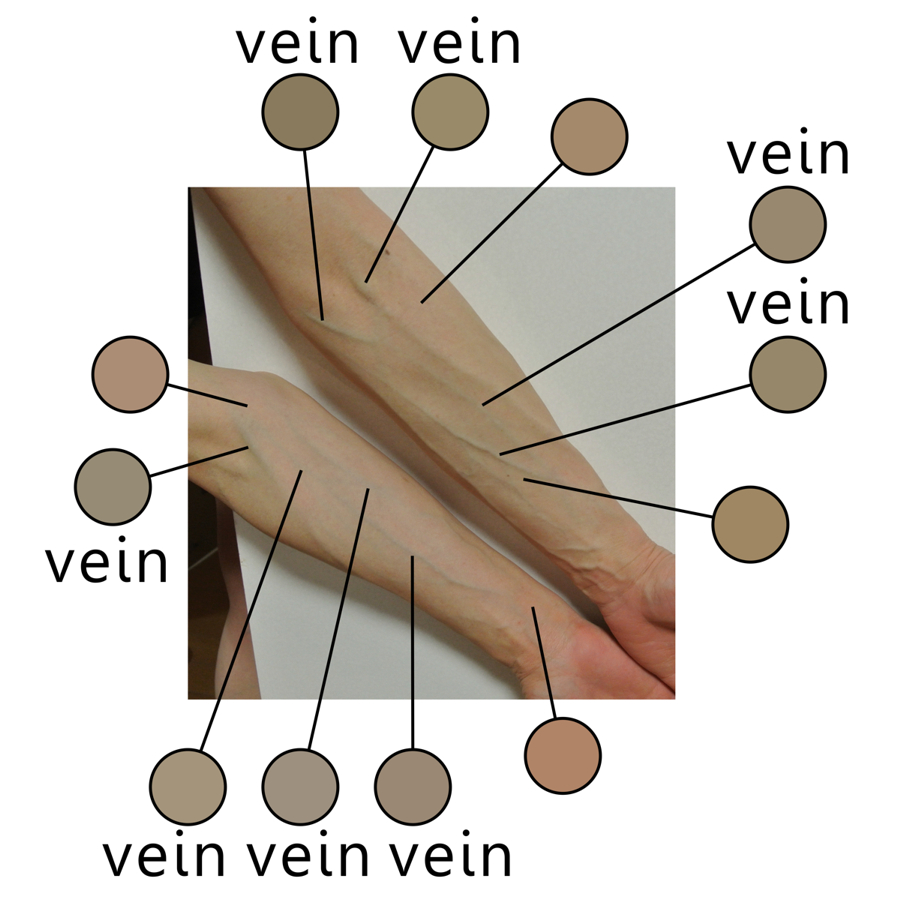
「静脈錯視:腕」
この手の青く浮き出て見える静脈は物理的には青くなく、彩度の低いオレンジ色であった。
Copyright Akiyoshi Kitaoka 2014 (April 24)
Thanks to MK for your tremendous contribution!
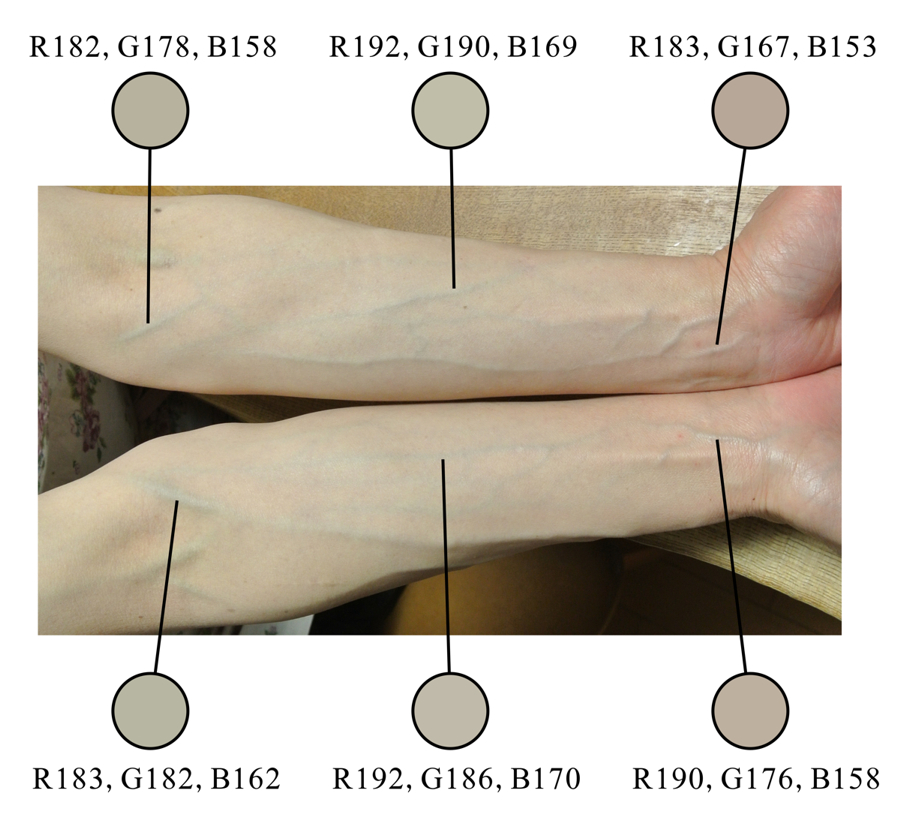
「静脈錯視:腕 2」
青白く撮れた写真の場合でも、この手の青く浮き出て見える静脈は物理的には青くなく、彩度の低い黄色かオレンジ色であった。
Copyright Akiyoshi Kitaoka 2014 (April 24)
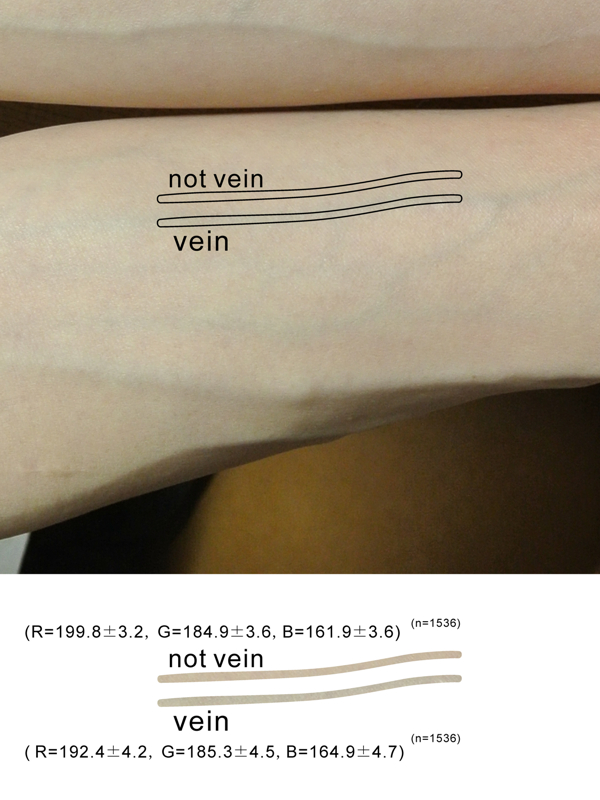
Copyright Akiyoshi Kitaoka 2017 (January 24)
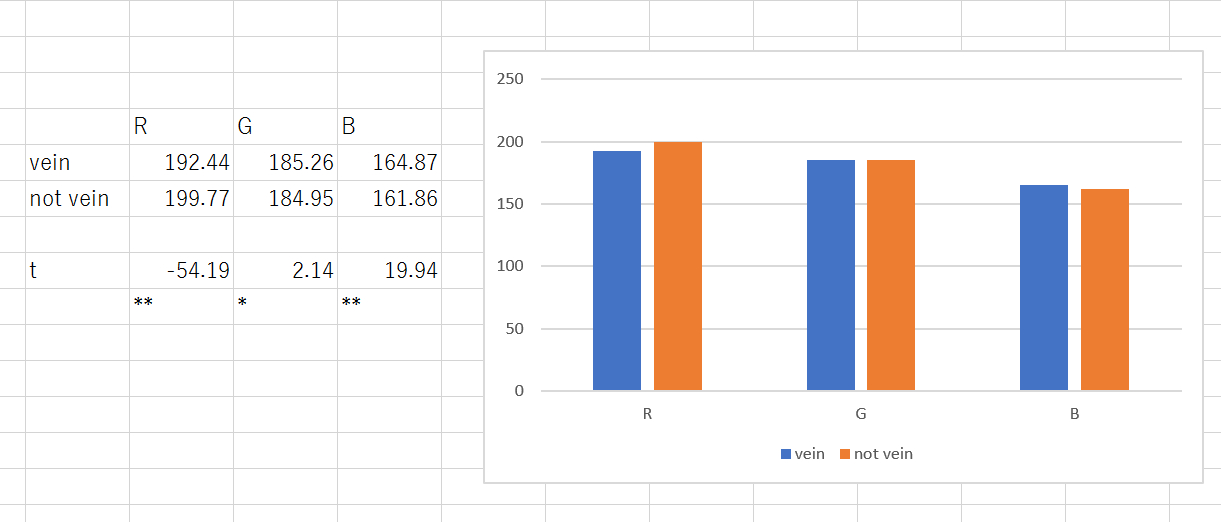
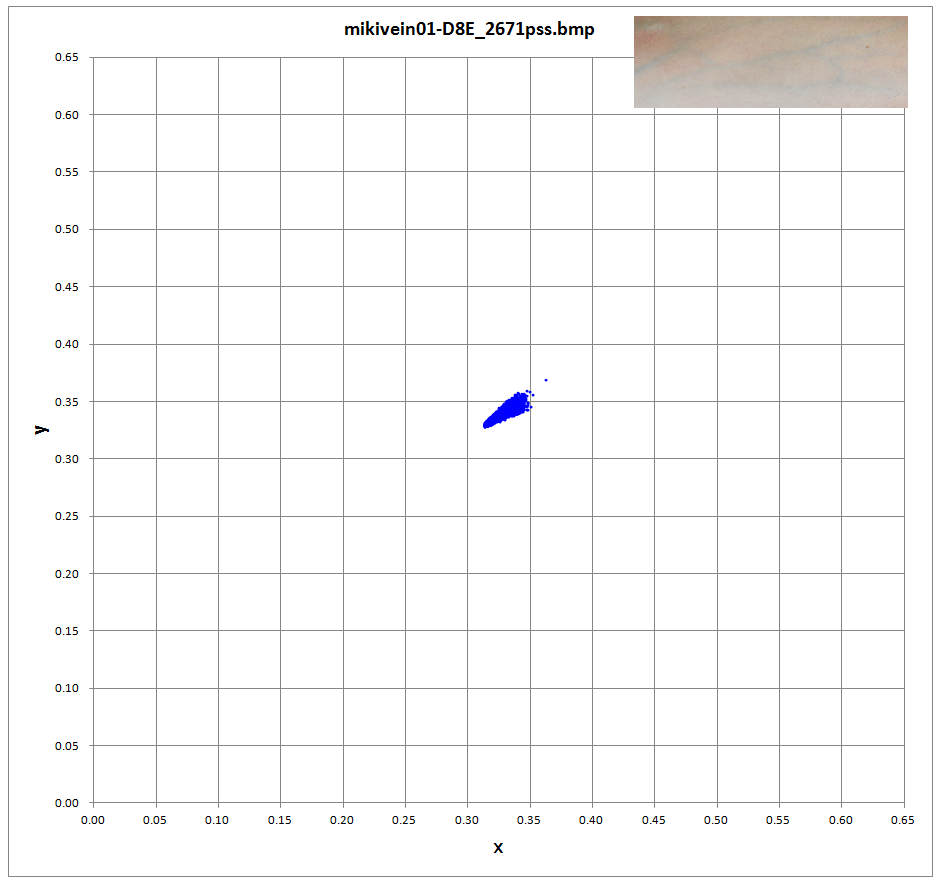
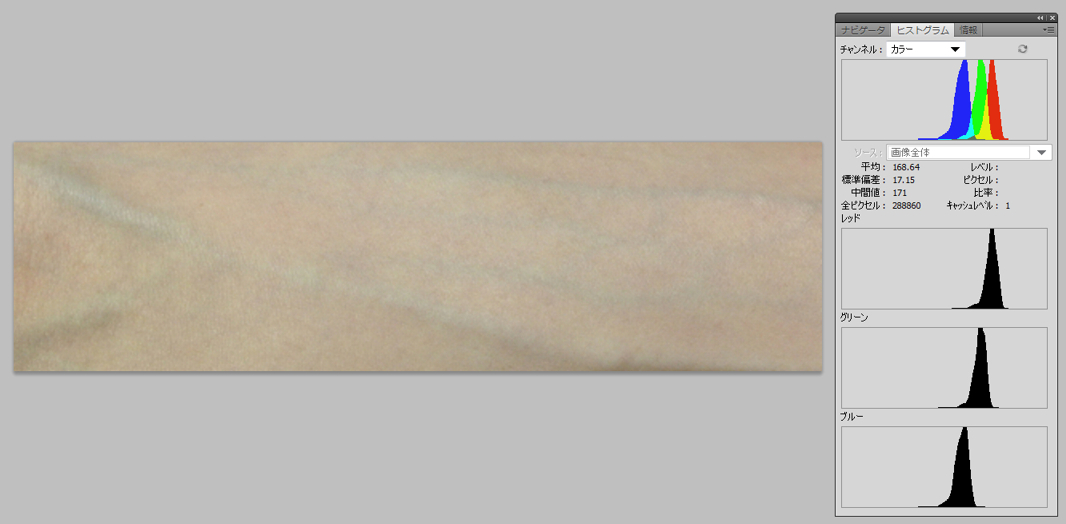
histogram equalization↓ ↑additive and multiplicative color changes
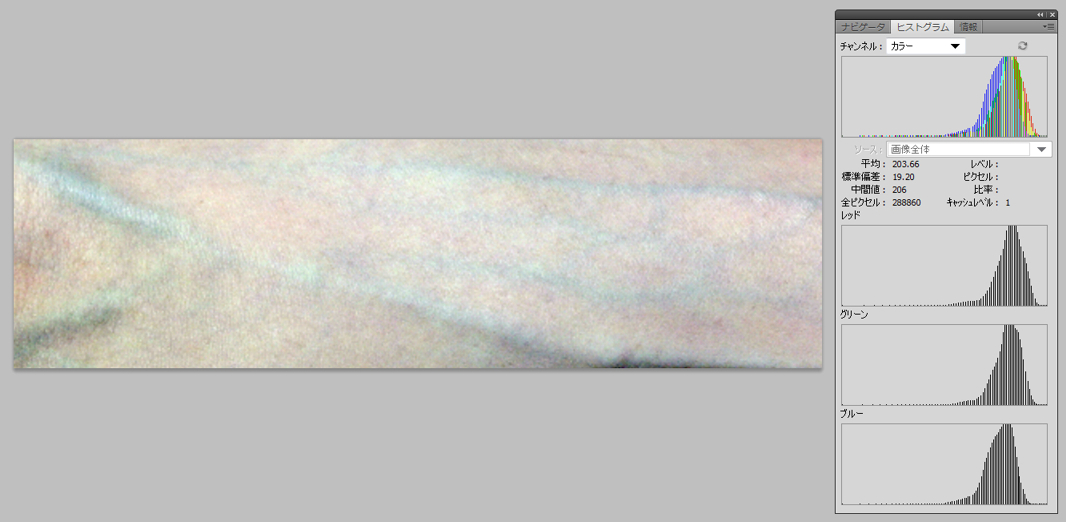
静脈画像化アルゴリズム(「ヒストグラム圧縮」)
Color change to vein color or "histogram compression"
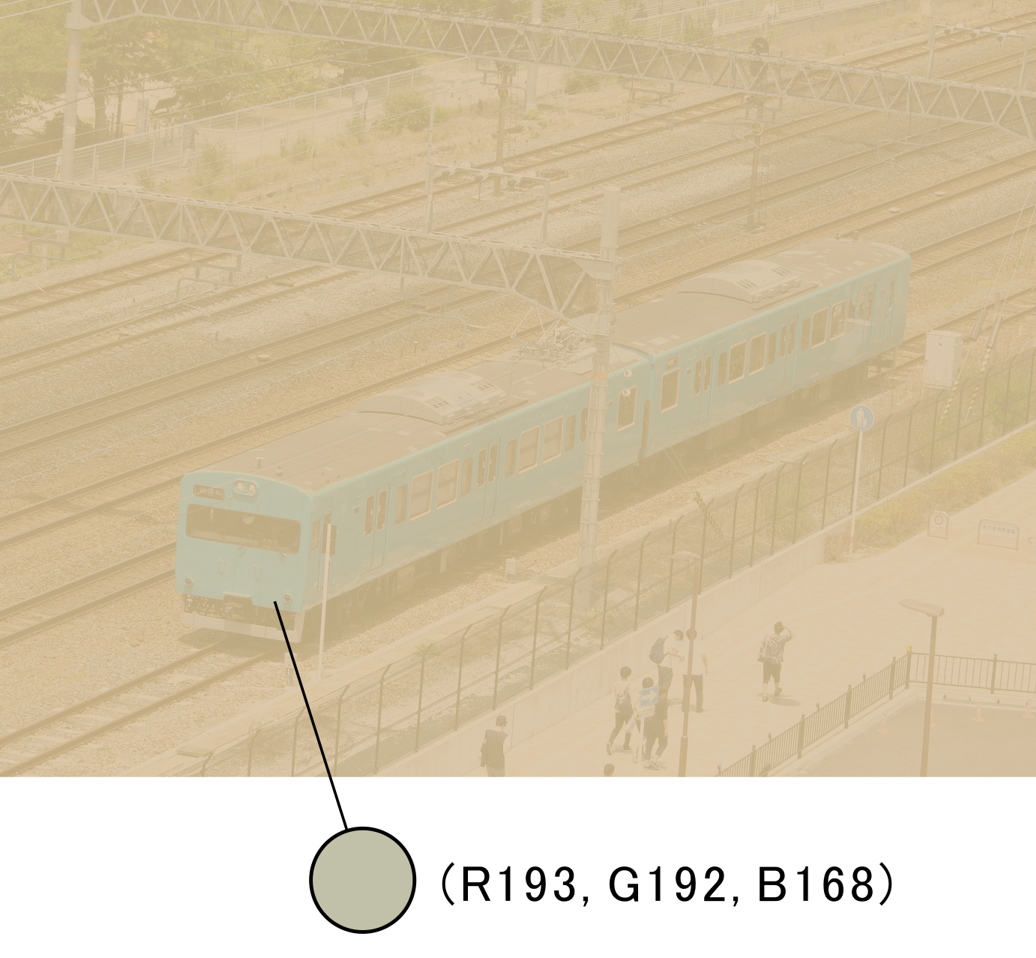
「青く見える電車」
The train cars appear to be bluish, though the pixels are yellowish.
すべてのピクセルは黄色の色相(一部灰色)であるが、電車の車体は青く見える。
Copyright Akiyoshi Kitaoka 2018 (September 9) (caption February 12, 2019)
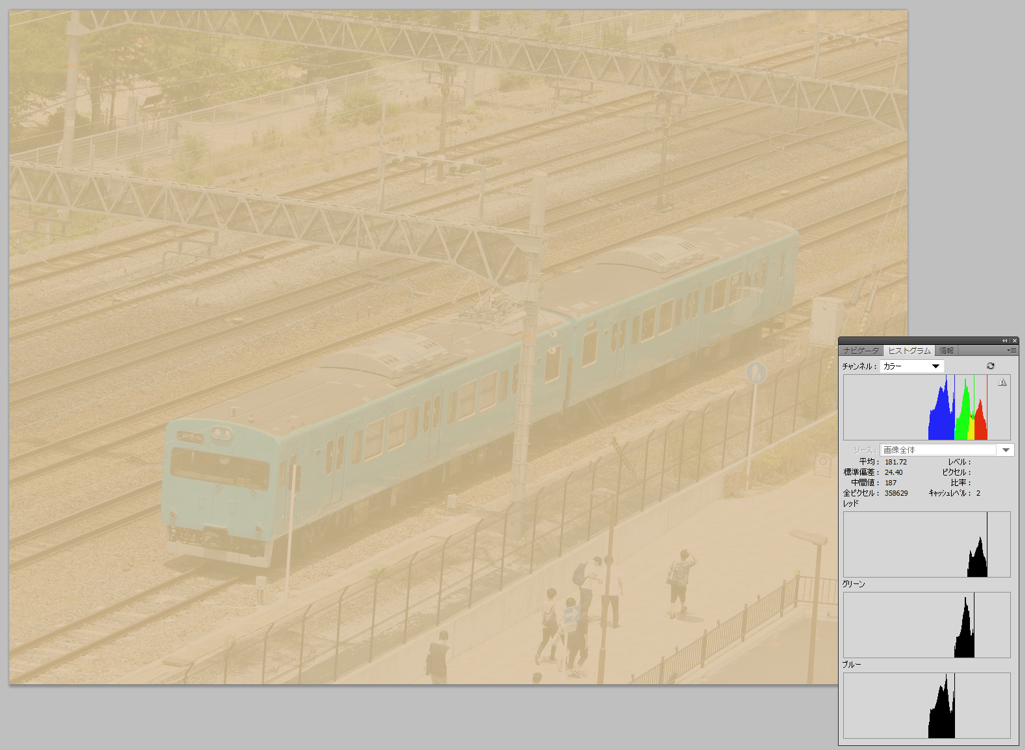
histogram equalization↓ ↑histogram compression
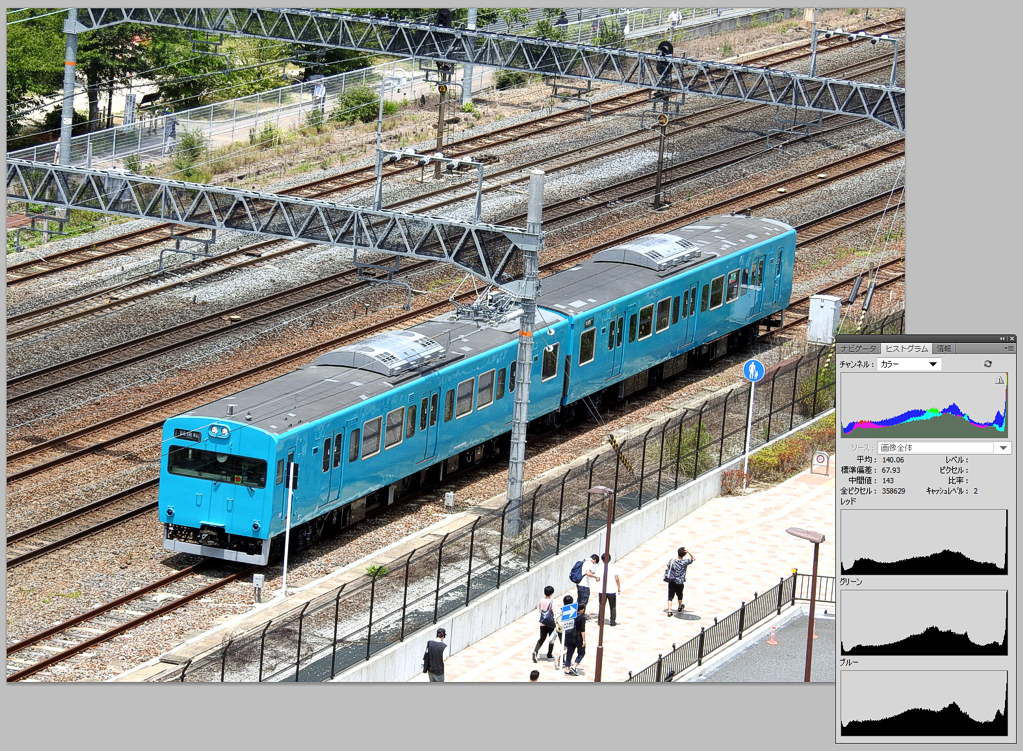
Abstract
The color illusion produced by additive color change can be explained with the histogram equalization model proposed by Shapiro, Hedjar, Dixon and Kitaoka (2018, i-Perception). Here I apply this model to the two different types of spatial color mixture (additive color mixture and subtractive one) and related color illusions (Munker illusion, neon color spreading, etc.) and discuss color perception.
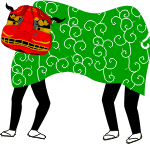 おしまい
おしまい
